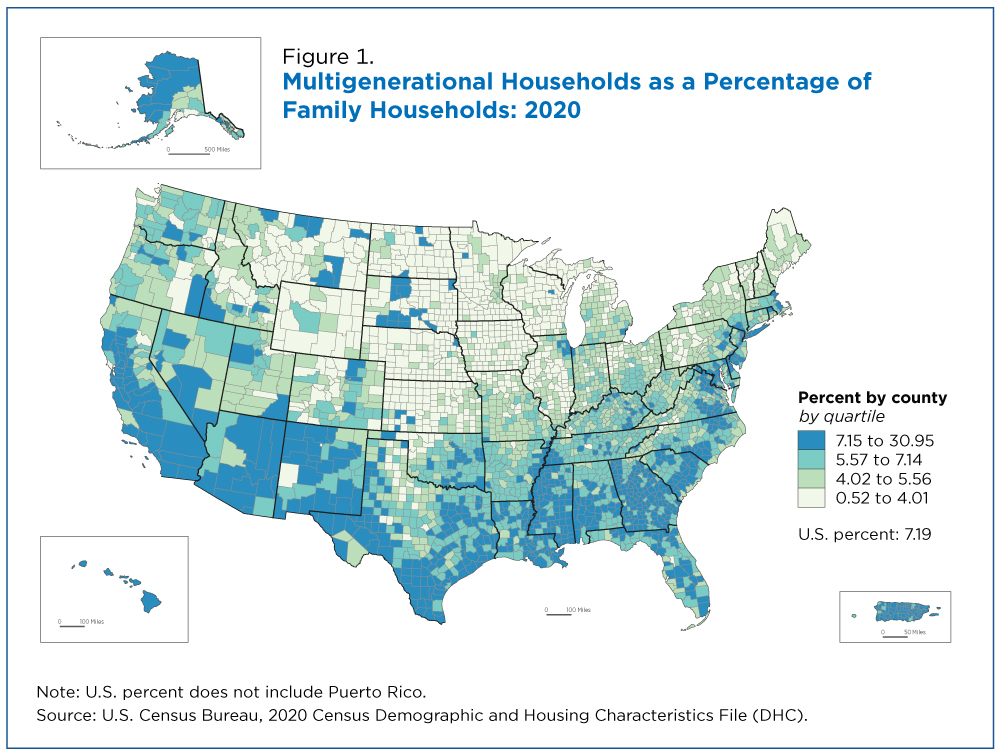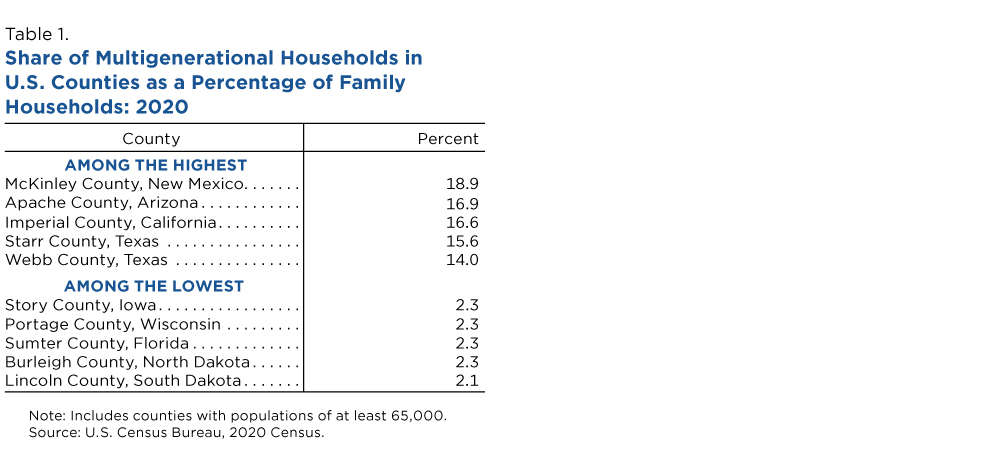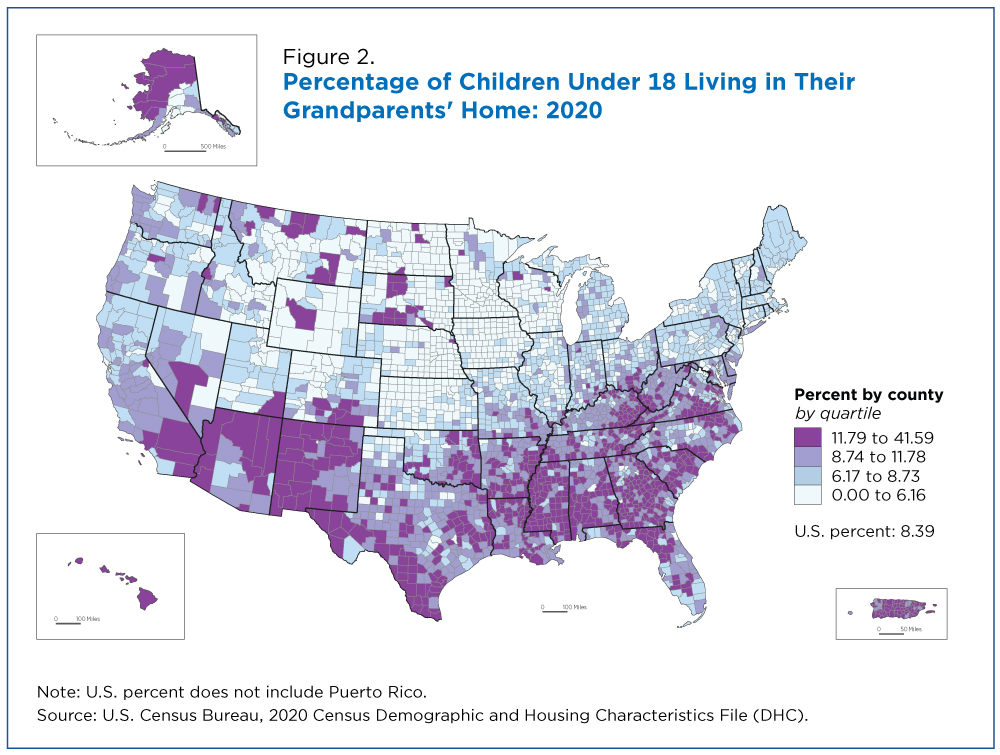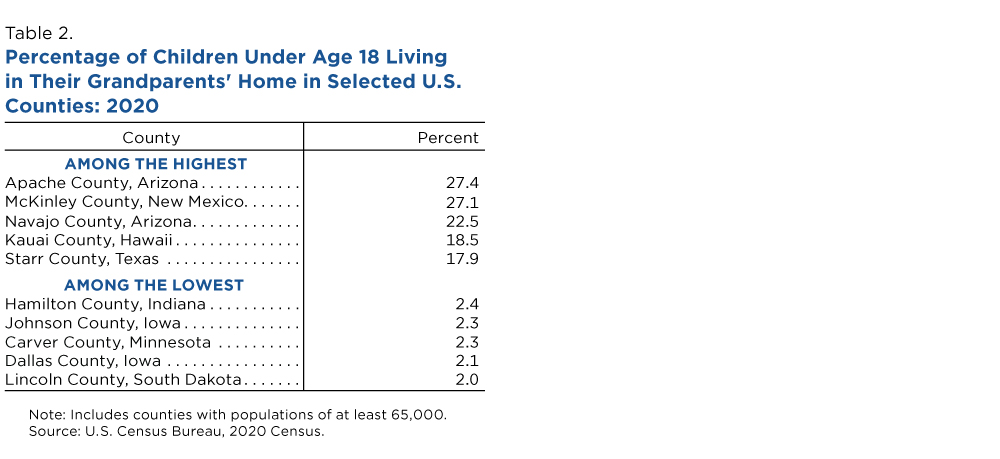In 2020, 7.2% of U.S. Family Households Were Multigenerational
Multigenerational households — three or more generations under one roof — made up 4.7% of all U.S. households but 7.2% of family households in 2020, an increase from 2010.
Family households are those with at least one person related to the householder by birth, marriage or adoption.
There were 6.0 million U.S. multigenerational households in 2020, up from 5.1 million in 2010, according to 2020 Census data released recently.
Multigenerational households were more prevalent throughout the South, Puerto Rico and some western states.
Multigenerational households were not equally distributed across the nation and the map below (Figure 1) shows the percentage of all family households that were multigenerational in 2020 by county.
While 2020 Census data show that 7.2% of all family households were multigenerational nationwide, county level percentages are wide-ranging, from 0.5% to 31.0%.
Multigenerational households were more prevalent throughout the South, Puerto Rico and some western states. This is consistent with 2010 data that also showed a higher percentage of multigenerational households throughout the South and West.
In 2020, many counties in Alaska, California, Hawaii, Nevada, Oregon and Washington, for example, had a high percentage of multigenerational households (Table 1). However, other states in the West like Idaho, Montana and Wyoming, had many counties with a lower prevalence of multigenerational households. These households were also less common in the Midwest and Northeast.
Children Living With Grandparents
In 2020, 6.1 million or 8.4% of children under age 18 lived in their grandparents’ home (Figure 2), up from 5.8 million in 2010.
Counties in Puerto Rico and throughout states in the South and West tended to have a greater share of children living in their grandparents’ home while counties in the Midwest – particularly in Iowa, Kansas, Minnesota and Wisconsin – had a smaller share.
The five counties with the greatest shares of children living with their grandparents were predominantly in the West, and those with the smallest shares were all in the Midwest.
Related Statistics
-
Stats for StoriesNational Grandparents Day: September 10, 2023In 2021, there were an estimated 6.7 million grandparents living with a grandchild under 18, 2.1 million of whom were responsible for most of their basic care.
-
Stats for StoriesNational Family Week: November 19-25, 2023In 2022, there were 83.3 million families in the U.S. and average family size had shrunk to 3.11 from 3.20 in 2007, according to the American Community Survey.
-
Stats for StoriesNational Parents’ Day: July 23, 2023Of the 63.2M parents living with their children <18, 76.1% lived with a spouse, 15.1% had no spouse/partner present. The rest lived with a cohabiting partner.
Subscribe
Our email newsletter is sent out on the day we publish a story. Get an alert directly in your inbox to read, share and blog about our newest stories.
Contact our Public Information Office for media inquiries or interviews.
-
America Counts StoryFamily Households Still the MajorityMay 25, 2023One-person households increased but family households remained two-thirds of all households in 2020.
-
America Counts StoryShare of U.S. Coupled Households Declined in 2020May 25, 2023Coupled households still made up more than half of all U.S. households but their share dropped since 2000.
-
America Counts StoryFamily Dinner Routine More Common in Hispanic and Immigrant FamiliesOctober 11, 2022New data show that Hispanic and immigrant parents are more likely to share frequent meals with their children than non-Hispanic and native-born counterparts.
-
EmploymentThe Stories Behind Census Numbers in 2025December 22, 2025A year-end review of America Counts stories on everything from families and housing to business and income.
-
Families and Living ArrangementsMore First-Time Moms Live With an Unmarried PartnerDecember 16, 2025About a quarter of all first-time mothers were cohabiting at the time of childbirth in the early 2020s. College-educated moms were more likely to be married.
-
Business and EconomyState Governments Parlay Sports Betting Into Tax WindfallDecember 10, 2025Total state-level sports betting tax revenues has increased 382% since the third quarter of 2021, when data collection began.
-
EmploymentU.S. Workforce is Aging, Especially in Some FirmsDecember 02, 2025Firms in sectors like utilities and manufacturing and states like Maine are more likely to have a high share of workers over age 55.








